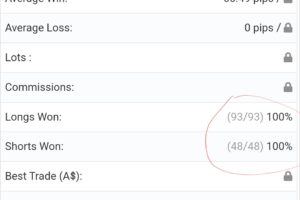
Trend vs. Anti-Trend
No matter what technical trading inputs you use, all patterns and methodologies fall into one of two categories—trend or anti-trend. Trend and anti-trend pattern trading and recognition is all about price momentum. In physics, we know that a body in motion tends to stay in motion. In trading, a market in motion tends to stay in motion until it does not!
Momentum and saturation are key concepts because trend and anti-trend markets are mirror images of one another.
- Momentum keeps a market moving in the direction of a trend
- Saturation reverses a trend
Trend
The idea behind trend-following is that momentum will move the market in a particular direction for a sustained period of time.
Advantages
- Profits by joining the crowd. Many traders believe there is safety in numbers.
- “Smart money” would never be on the wrong side of a trend.
Disadvantages
- Frequent and unavoidable whipsaws. You must deal with sideways action and volatility while waiting for a trend to reach its eventual destination.
- All trend-trading signals, by definition, are late. It is impossible to identify a trend before it has begun.
- Safety in numbers can backfire. If the “smart money” is wrong and everyone realizes it at the same time, there can be a frantic rush for the emergency exit. If you’re going to be in the trend game, the rule is: Get out when you can, not when you have to.
How to Identify When a Trending Market Becomes an Anti-Trending Market
It is crucial to understand the difference between trending markets and anti-trending markets when it comes to entry and exit points for trading. Let’s look at what typically happens at the beginning of both a bull market and a bear market.
Bull Markets
- Market triggers a signal. For example, the market trades above the 200-day moving average (usually a very bullish buy signal).
- Buyers enter the market. The buy signal triggers buying.
- Sellers pull their offers. It becomes difficult for buyers to execute their buy orders
- Short covering. Those who have sold short become nervous about mounting losses as the market moves higher. Shorts buy back their short positions, which adds to upward market momentum.
- Market price moves higher. New buyers, attracted by the trend and growing momentum, enter the market and drive it even higher.
Bear Markets
- Market triggers a signal. For example, the Relative Strength Index (RSI) extends past 70 (usually a bearish sell signal). Sellers enter the market. The sell signal triggers selling.
- Buyers pull their bids. it becomes difficult for sellers to execute their sell orders.
- Long dumping. Those who have bought and are long become nervous about losing profits or increasing losses as the market moves lower. Longs become sellers, which adds to the downward market momentum.
- Market price moves lower. New sellers, attracted by falling prices and growing momentum, enter the market and drive it even lower.



